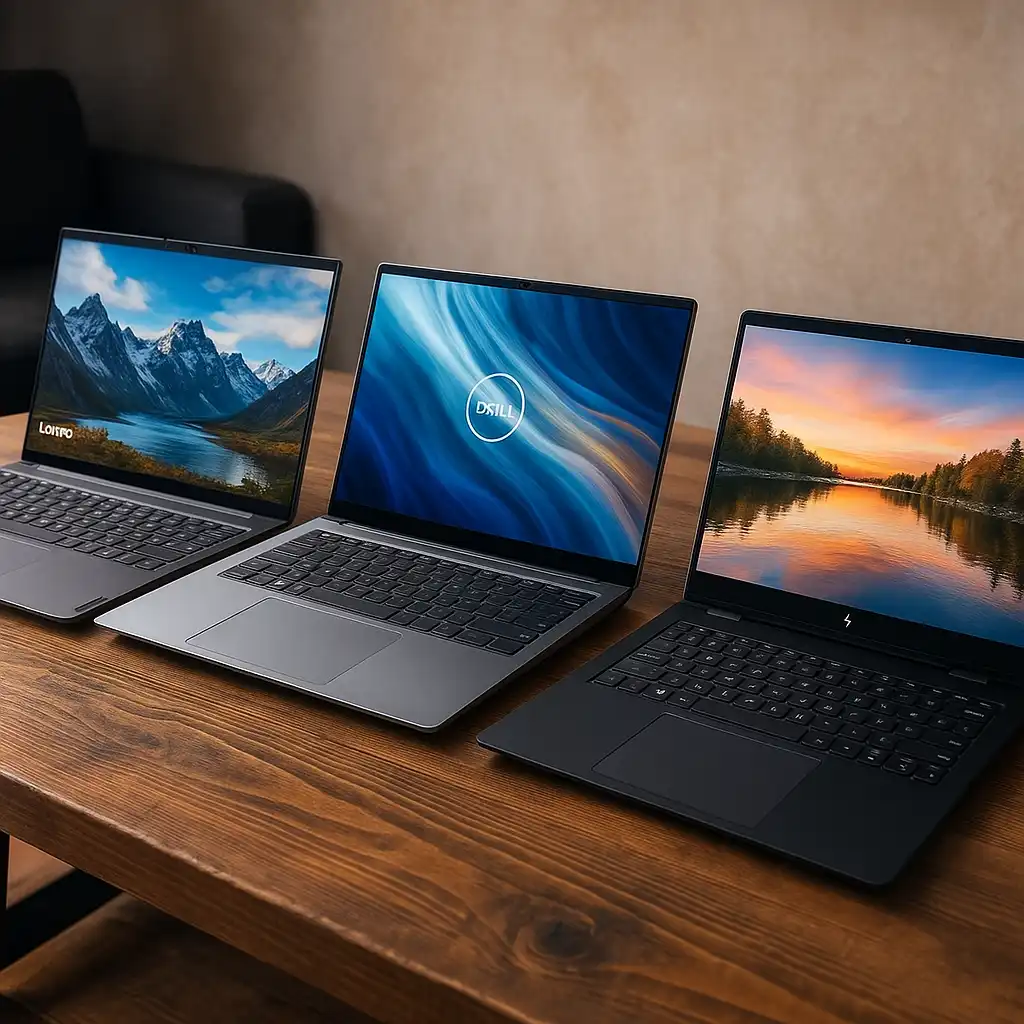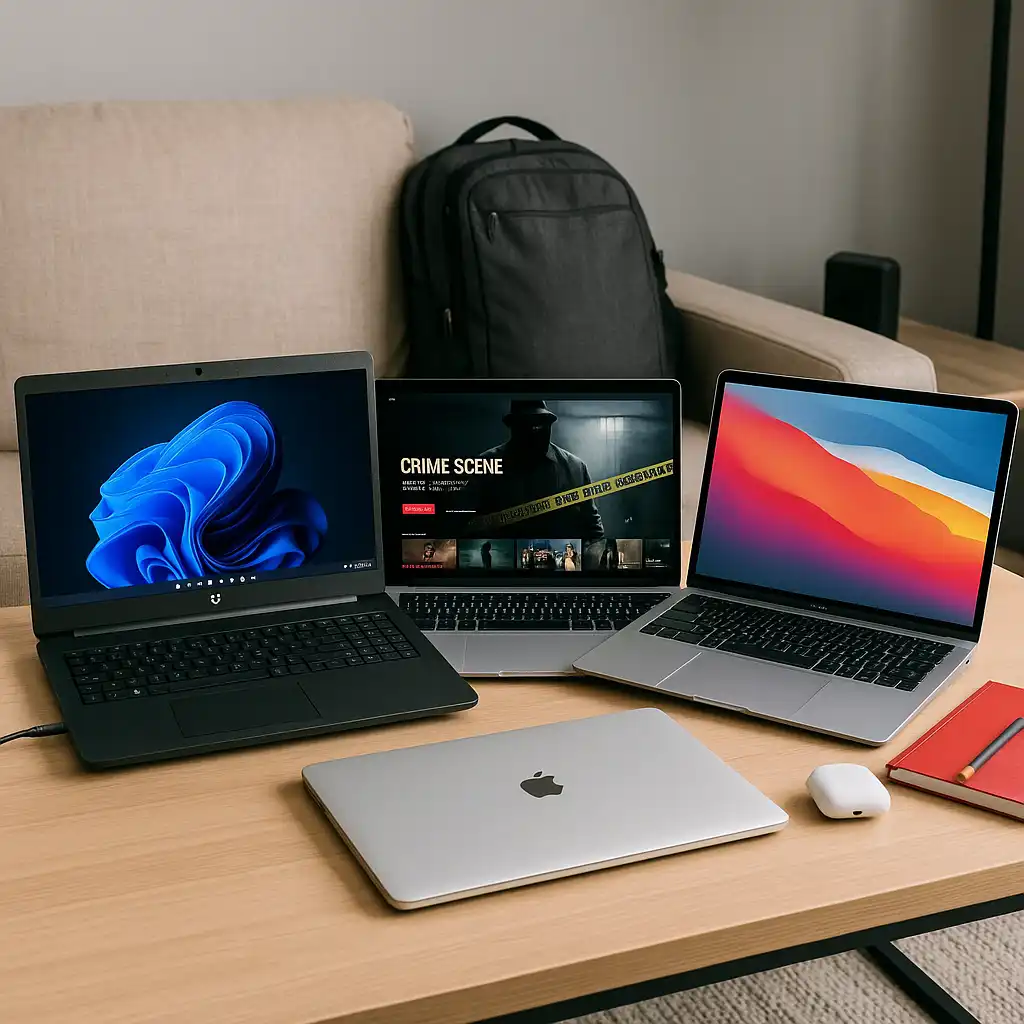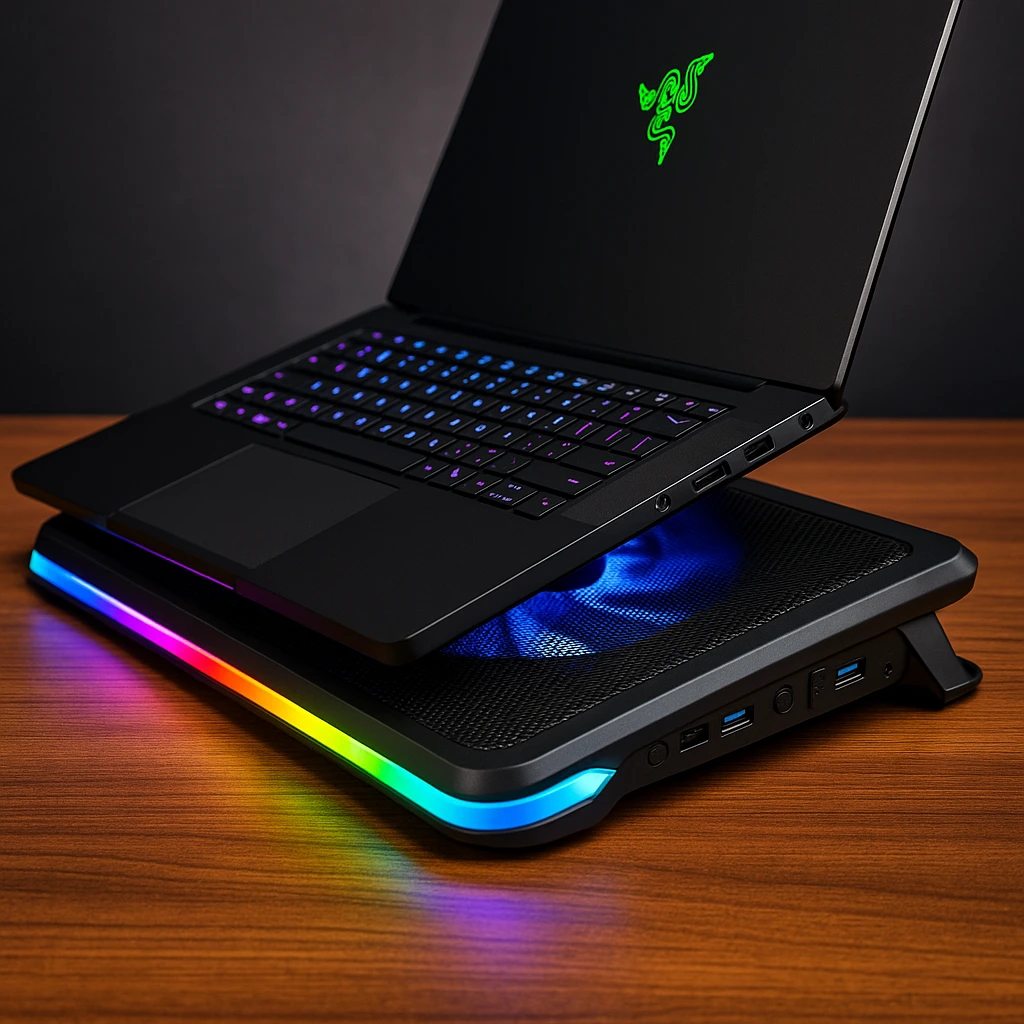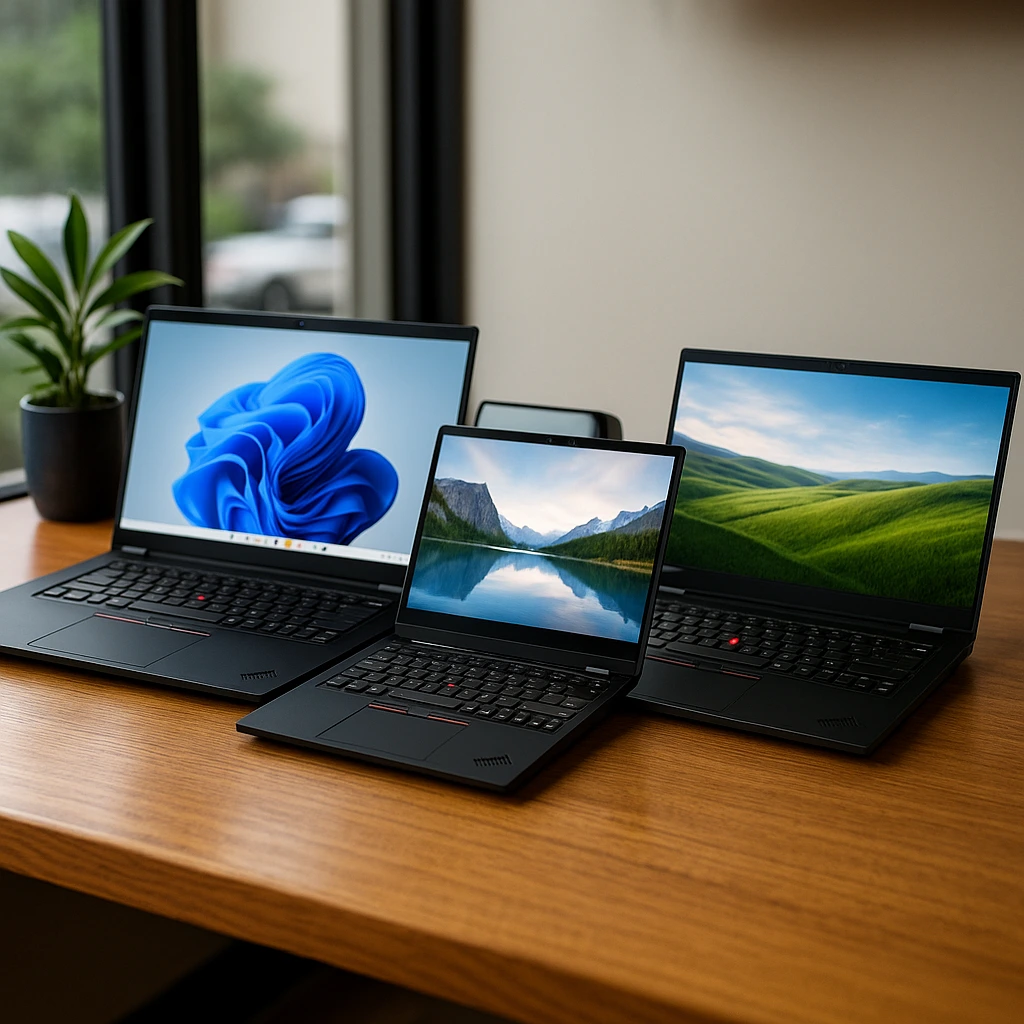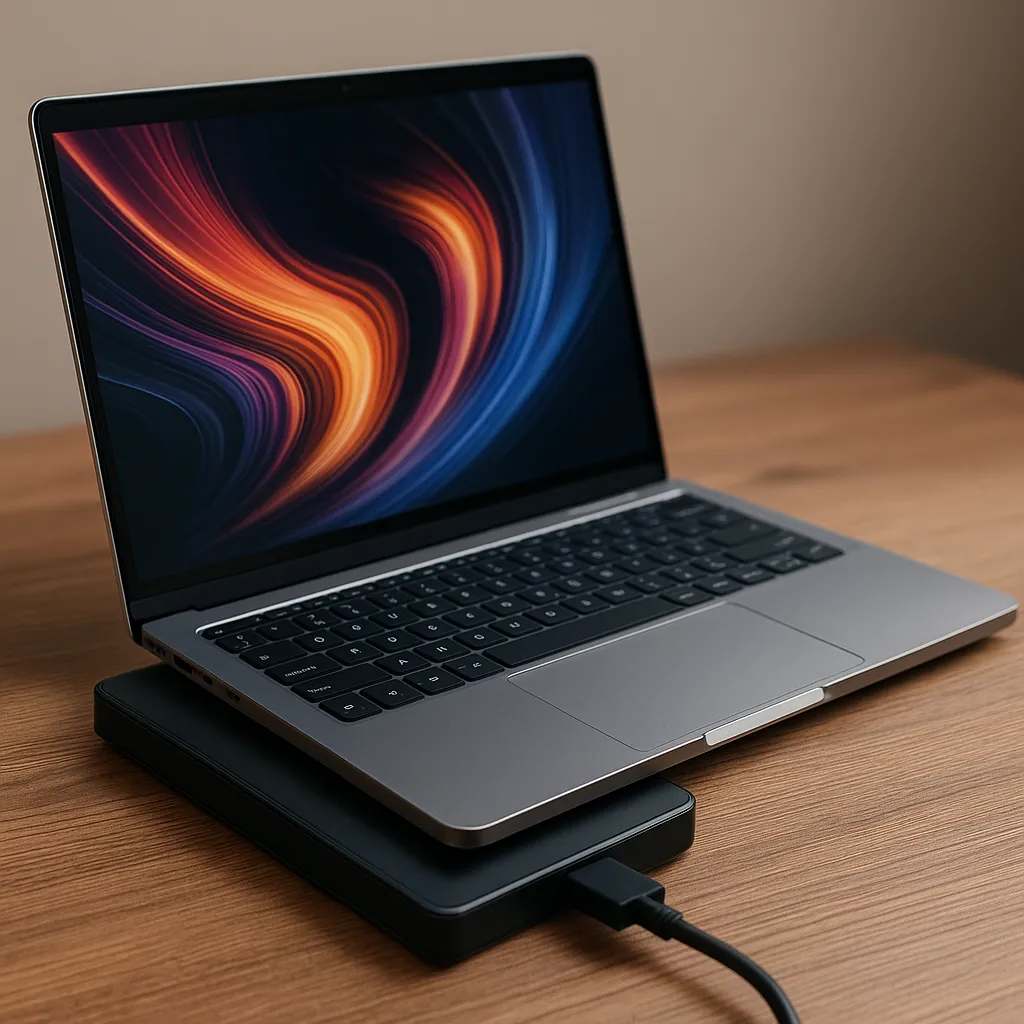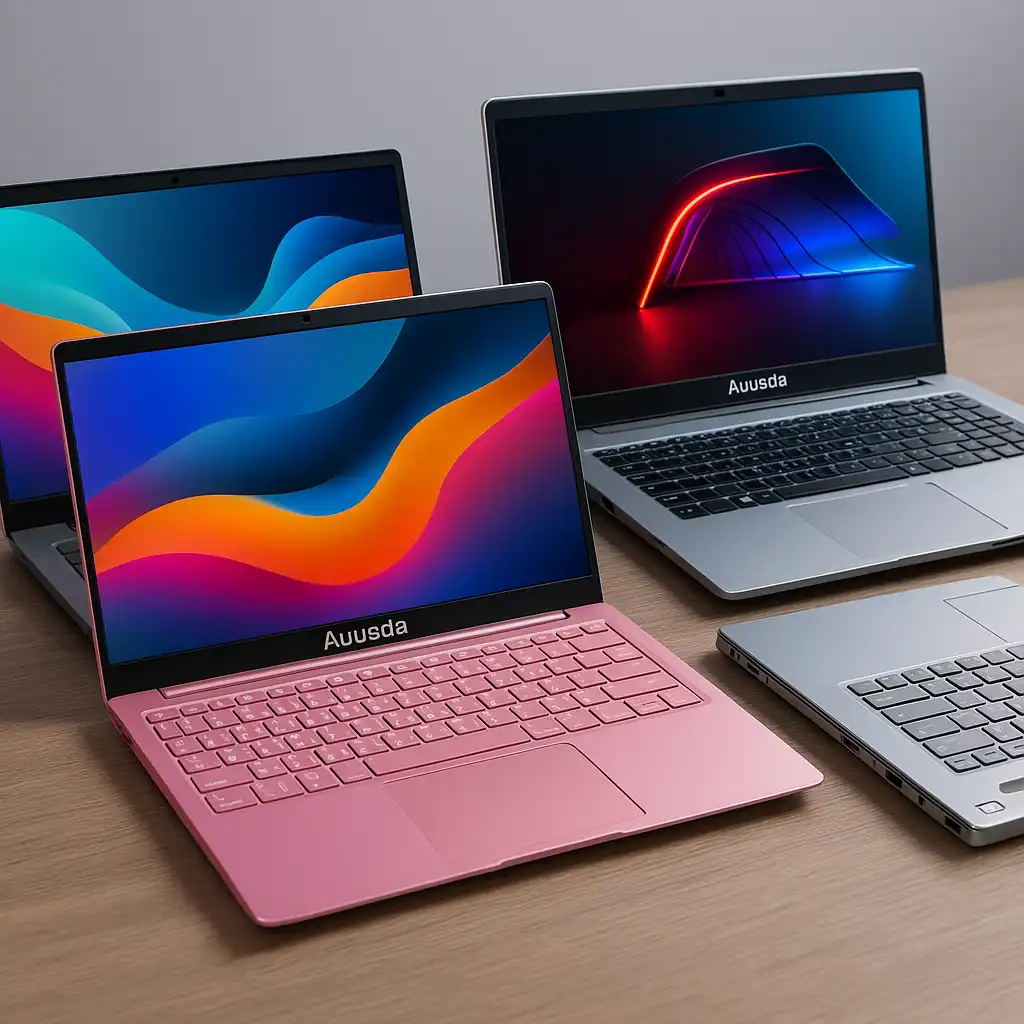HP vs Dell vs Lenovo Laptop – Which Is Better for Everyday Use?
Disclosure: This post contains affiliate links. LaptopVoyager.com participates in the Amazon Associates Program and may earn commissions on qualifying purchases, at no extra cost to you.
Last Updated: October 2025
Trying to decide between HP, Dell, and Lenovo? Each brand has its own strengths — sleek designs, long-lasting batteries, or legendary durability. The real question is how you’ll use your laptop day to day. For students, professionals, or creators, the best choice depends on what matters most: performance, comfort, or portability.
👉 If you’re comparing Dell’s different series, check our guide on Dell Inspiron vs Latitude vs XPS to see which lineup fits your needs best.
💰 Check Price & Availability
View on Amazon – HP Spectre x360 2-in-1 14″ Touchscreen
View on Amazon – Dell XPS 13 AI PC Laptop
View on Amazon – Lenovo ThinkPad X1 Carbon Gen 13 Aura Edition
📋 Quick-View Comparison List
- HP Spectre x360 (2024)
💻 14″ 2.8 K OLED touchscreen (120 Hz)
⚙️ Intel Core Ultra 7 155H + Intel Arc Graphics
🧠 32 GB LPDDR5 RAM 💾 4 TB SSD storage
🔁 Convertible 2-in-1 design for tablet mode
🔋 Around 13 hours battery life in real-world use
💡 Great for creatives who sketch or edit on touch screens - Dell XPS 13 AI PC Laptop
💻 13.4″ 2.8 K InfinityEdge touch display
⚙️ Snapdragon X Elite X1E-80-100 (ARM)
🧠 16 GB LPDDR5X RAM 💾 512 GB SSD
🌀 Fanless design for silent operation
🔋 Up to 16 hours battery life
🌍 Perfect for students and travelers who need all-day power - Lenovo ThinkPad X1 Carbon Gen 13 (Aura Edition)
💻 14″ 2.8 K OLED display with deep contrast
⚙️ Intel Ultra 7 258V processor
🧠 32 GB DDR5 RAM 💾 2 TB SSD
🪶 Light carbon-fiber chassis that feels premium
⌨️ Best-in-class keyboard comfort
🔋 Up to 14 hours battery life for office and travel
🔍 Key Factors Students Should Consider
HP, Dell, and Lenovo each bring a unique balance of style and performance. HP’s sleek 2-in-1 design appeals to creatives, Dell pushes efficiency and battery life, while Lenovo keeps a focus on comfort and durability.
If you juggle schoolwork, entertainment, and light design, aim for 16 GB RAM or more and a modern chip like Intel Core Ultra or Snapdragon X Elite to handle multitasking smoothly.
🔍 Balancing Performance and Price in a Laptop
Dell’s XPS line delivers excellent everyday performance for the cost, while HP’s Spectre adds touch flexibility for design-oriented users. Lenovo’s ThinkPads focus on long-term reliability — ideal for those who’d rather buy once and keep it for years.
👉 Looking for affordable options? Check our list of student laptops that deliver great value.
🔍 Portability & Battery Life for Everyday Use
The Dell XPS 13 is hard to beat for mobility and battery life, lasting around 16 hours on light tasks. The HP Spectre x360 adds touchscreen flexibility without extra bulk, while Lenovo’s X1 Carbon proves you can have both lightweight design and rugged build quality. Each is built for life on the move — it just depends how you work.
🔍 Which Laptop Fits Different Types of Users
- Students and everyday users: Dell XPS 13 offers smooth performance and whisper-quiet efficiency.
- Creative professionals: HP Spectre x360 delivers a vibrant touch display and strong graphics for editing and design.
- Business and writing workflows: Lenovo ThinkPad X1 Carbon combines a legendary keyboard with top-tier durability.
📦 HP Spectre x360 (2024) – Best for Creative Flexibility
The Spectre x360 is as functional as it is beautiful. Its convertible design lets you switch from typing to sketching in seconds, and the OLED display looks stunning for creative work. Intel’s Core Ultra 7 keeps everything running snappy, though the premium build does come at a higher price.
📦 Dell XPS 13 AI PC – Best for Portability and Battery
Dell nailed portability with the new XPS 13. It’s light, silent, and efficient thanks to the Snapdragon X Elite chip. It’s a perfect fit for students or frequent flyers who need a compact machine that can last all day without a charger. The only catch — you can’t upgrade the RAM or SSD later.
📦 Lenovo ThinkPad X1 Carbon Gen 13 – Best for Typing and Reliability
Few laptops feel as refined as the X1 Carbon. The keyboard is in a class of its own, and the carbon-fiber chassis feels both light and strong. It’s made for people who write a lot and need hardware that just keeps working. If you value consistency over flash, this is the one.
📌 Key Takeaways
- HP focuses on 2-in-1 creativity, Dell on battery and portability, Lenovo on comfort and longevity.
- Intel Core Ultra and Snapdragon X Elite offer faster, cooler, and more efficient performance.
- Aim for 16–32 GB RAM for multitasking and creative apps.
- The best brand depends on your routine — work, school, or creative projects.
🟢 FAQs
Q: Which brand is most reliable?
Lenovo ThinkPads are known for longevity, while Dell and HP excel in design and support. All three are safe bets for premium build quality.
Q: Can these run creative apps or light games?
Yes — HP’s Spectre handles editing apps smoothly, Dell’s XPS is great for media work, and Lenovo’s X1 Carbon shines for office and writing tasks.
Q: Which lasts longest on battery?
Dell XPS 13 typically wins with up to 16 hours, followed by Lenovo and HP.
Q: Are Spectre and X1 Carbon worth the premium?
If you value build quality, premium displays, and long-term reliability, absolutely — both are top-tier choices.
✅ Conclusion
When comparing HP vs Dell vs Lenovo laptops, there’s no single “best.” HP Spectre x360 is ideal for creators who love touch control, Dell XPS 13 fits students and travelers needing all-day power, and Lenovo ThinkPad X1 Carbon remains a favorite for professionals who want comfort and trustworthy performance.

